
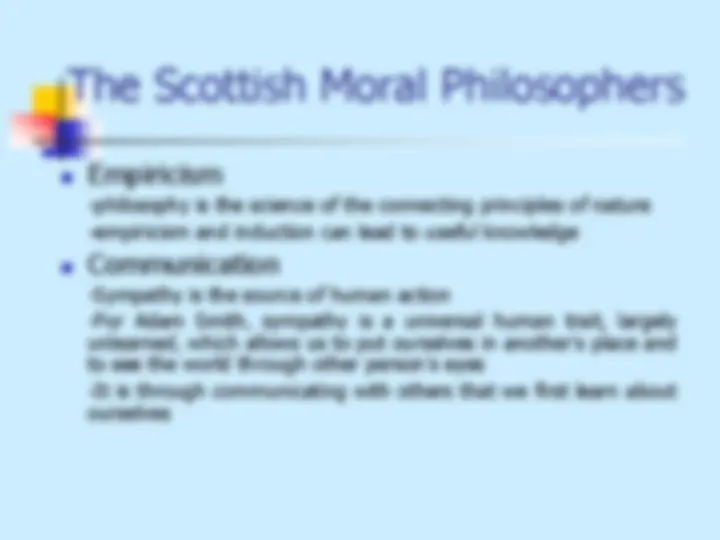
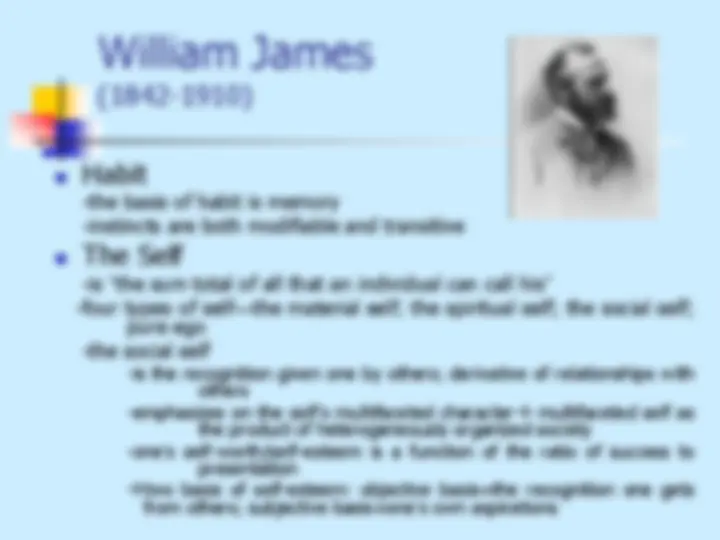
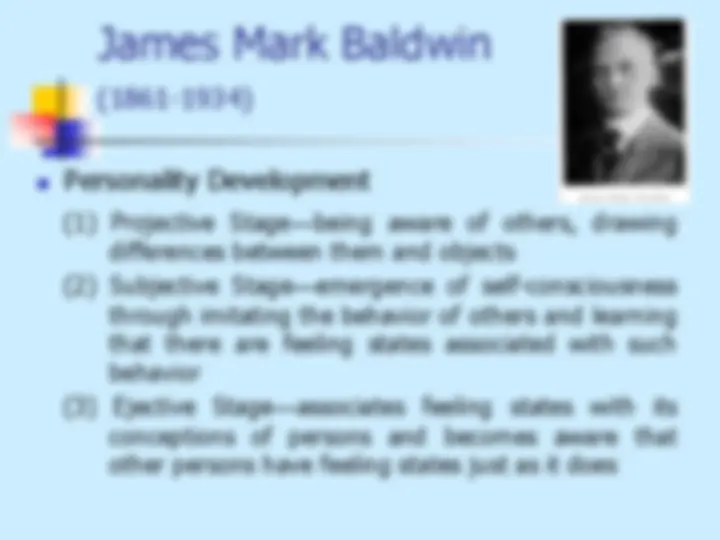
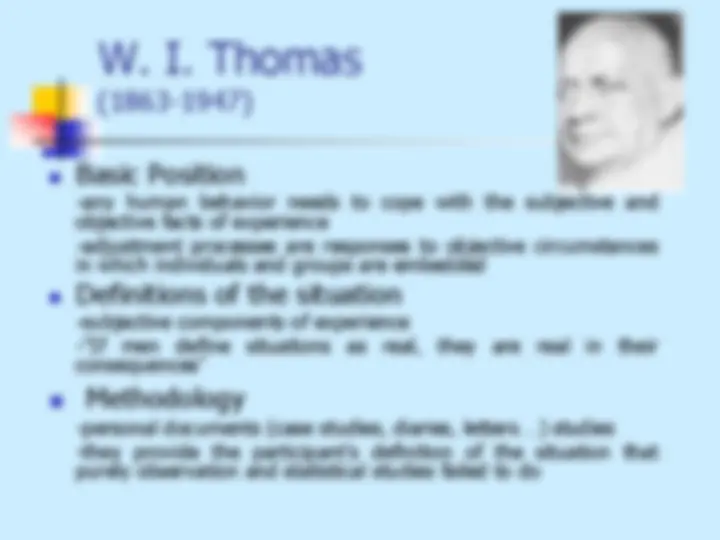
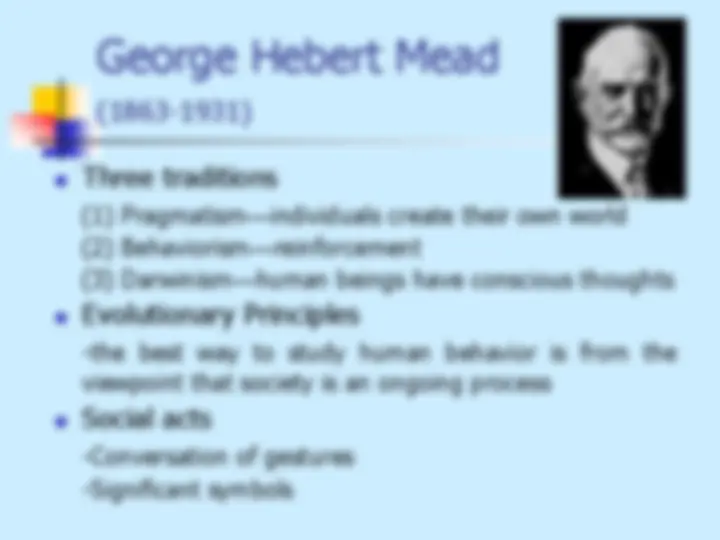
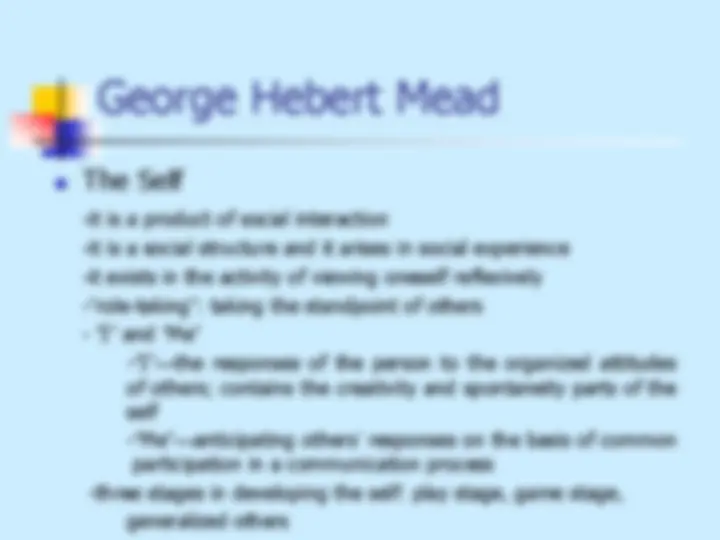
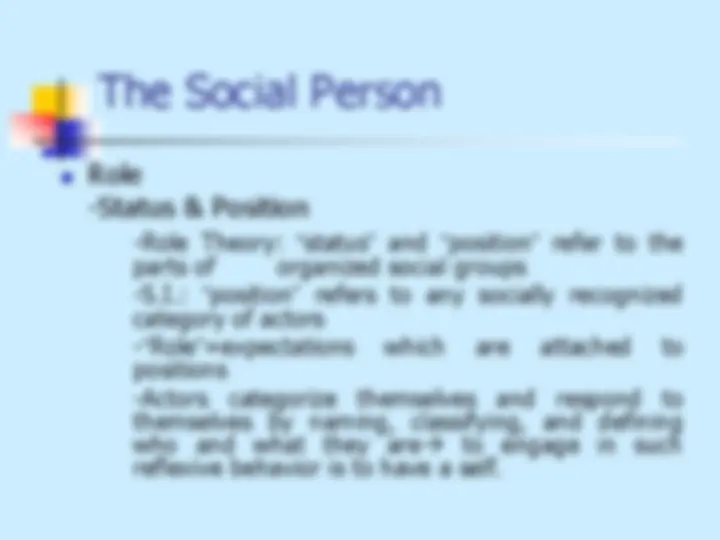
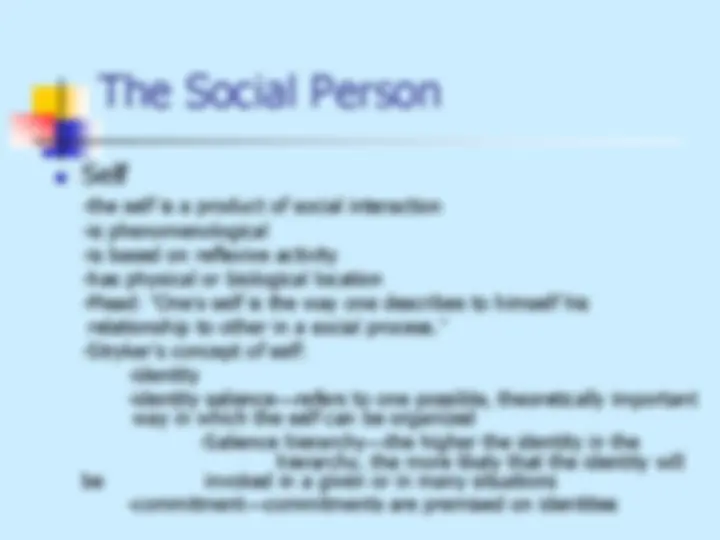
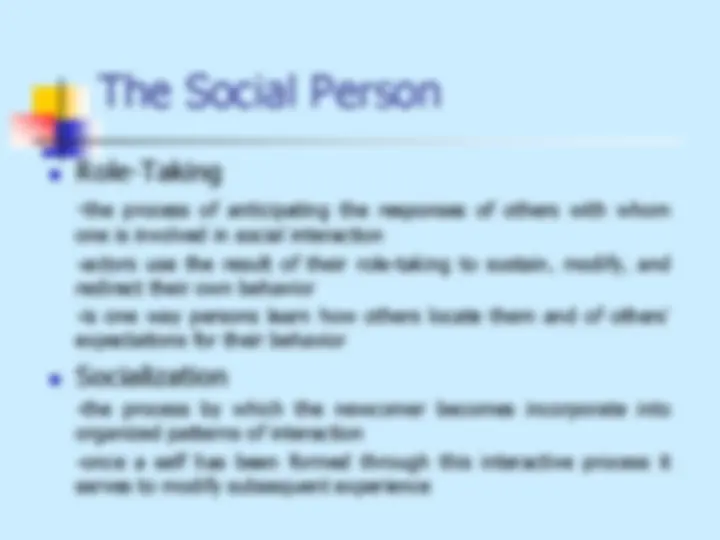
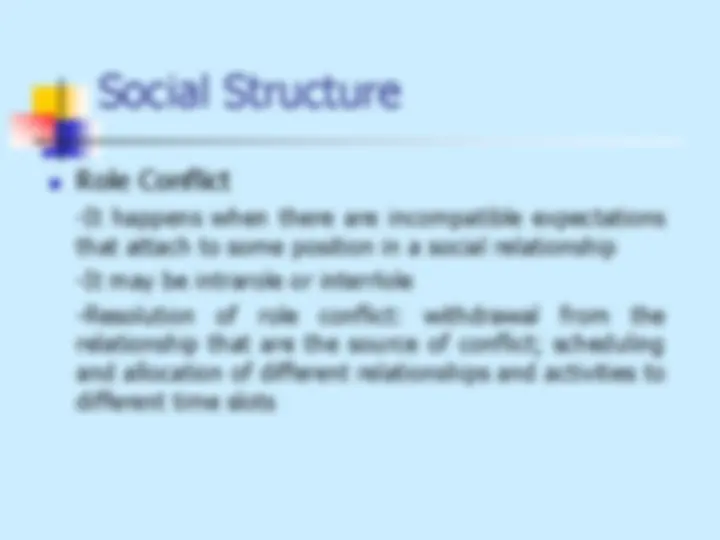
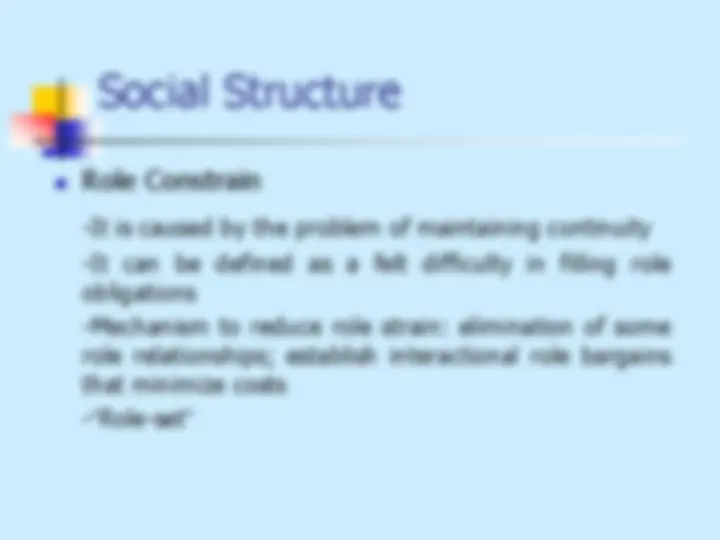


Study with the several resources on Docsity

Earn points by helping other students or get them with a premium plan


Prepare for your exams
Study with the several resources on Docsity

Earn points to download
Earn points by helping other students or get them with a premium plan
Community
Ask the community for help and clear up your study doubts
Discover the best universities in your country according to Docsity users
Free resources
Download our free guides on studying techniques, anxiety management strategies, and thesis advice from Docsity tutors
An introduction to Symbolic Interactionism, a sociological theory that explores the relationship between individuals and society. The theory is both a framework for analyzing society and a social psychological theory addressing problems of socialization. It covers key concepts such as habit, self, personality development, and social interaction, drawing from the works of influential thinkers like William James, George Herbert Mead, and Charles Horton Cooley.
What you will learn
Typology: Slides
1 / 19

This page cannot be seen from the preview
Don't miss anything!












Symbolic Interactionism are both a general framework for the analysis of society and a social psychological theory addressed to problems of socialization
Theory vs. Frames of Reference:
-the basis of habit is memory -instincts are both modifiable and transitive
-is “the sum total of all that an individual can call his” -four types of self—the material self; the spiritual self; the social self; pure ego -the social self -is the recognition given one by others; derivative of relationships with others -emphasizes on the self’s multifaceted character multifaceted self as the product of heterogeneously organized society -one’s self-worth/self-esteem is a function of the ratio of success to presentation two basis of self-esteem: objective basis=the recognition one gets from others; subjective basis=one’s own aspirations
(1) Imagination of our appearance to other person (2) Imagination of other person’s judgment to our
appearance (3) Self-feeling from these imaginations
-any human behavior needs to cope with the subjective and objective facts of experience -adjustment processes are responses to objective circumstances in which individuals and groups are embedded
-subjective components of experience -"If men define situations as real, they are real in their consequences”
-personal documents (case studies, diaries, letters…) studies -they provide the participant's definition of the situation that purely observation and statistical studies failed to do
-it is a product of social interaction
-it is a social structure and it arises in social experience
-it exists in the activity of viewing oneself reflexively
-three stages in developing the self: play stage, game stage, generalized others
-social process, social types, developmental patterns
-the interaction of minds, the conscious association of person -sociation requires individual to be “generalized”: the individual must be more than or less than an individual personality to be a part of society
-the self is a product of social interaction -is phenomenological -is based on reflexive activity -has physical or biological location -Mead: “One’s self is the way one describes to himself his relationship to other in a social process.” -Stryker’s concept of self: -identity -identity salience—refers to one possible, theoretically important way in which the self can be organized -Salience hierarchy—the higher the identity in the hierarchy, the more likely that the identity will be invoked in a given or in many situations -commitment—commitments are premised on identities
-Anything that can be analyzed into a set of parts so that one part is in some way dependent on each of the remaining parts. -The self can be conceptualized as a set of discrete identities organized into a hierarchy of salience is to say that the self is a system composed of interrelated parts.
-Social Interaction
-Interactions can be short (two persons say hello to another) or long (the relationships between doctor and patient, parent and child)
-Longer interactions develop expectations with respect to the properties that are be observed in the interactions
-Group -Networks of interaction with a high degree of closure -It is structured by both cooperative and conflictful interactions -Groups are systems of interpersonal relationships which tend to be normatively defined, or to contain normative elements -Groups are structures of differentiated relationships; they are structures of positions and roles -Groups is formed of people sharing some structural characteristic (age, class, ethnicity…etc.) -Scheduling -One of the social mechanisms to isolate groups from one another or to guarantee that contact will happen